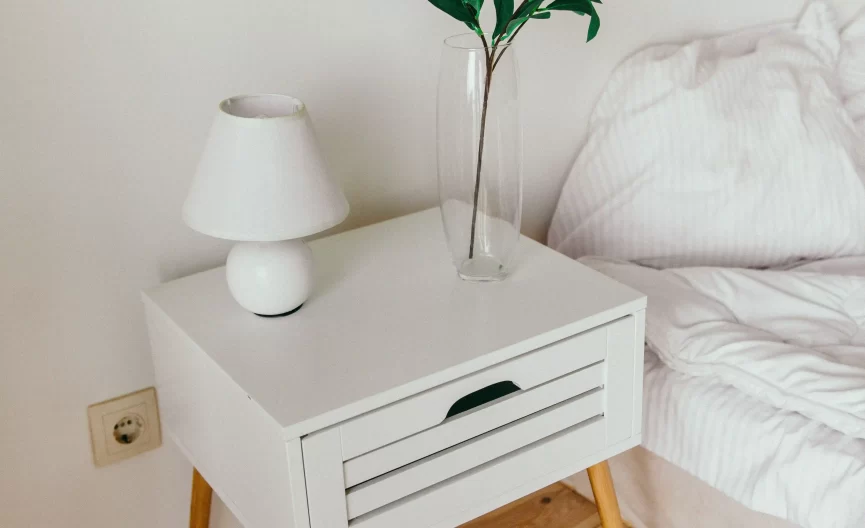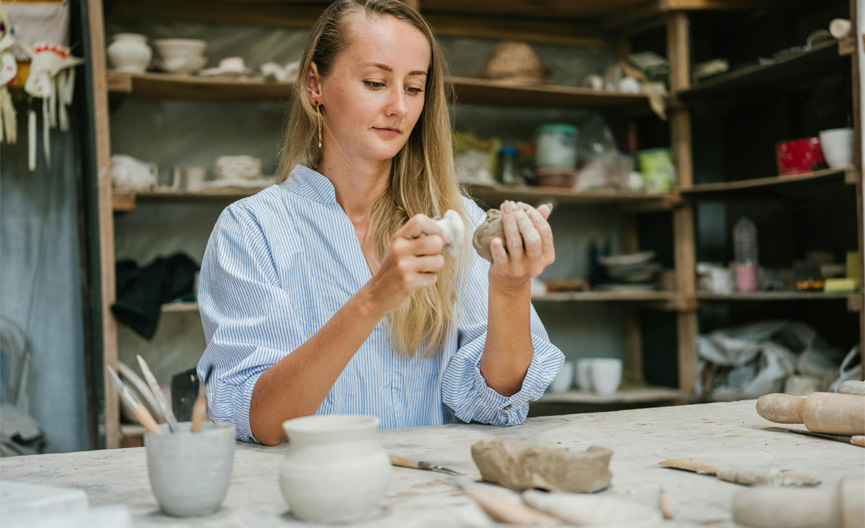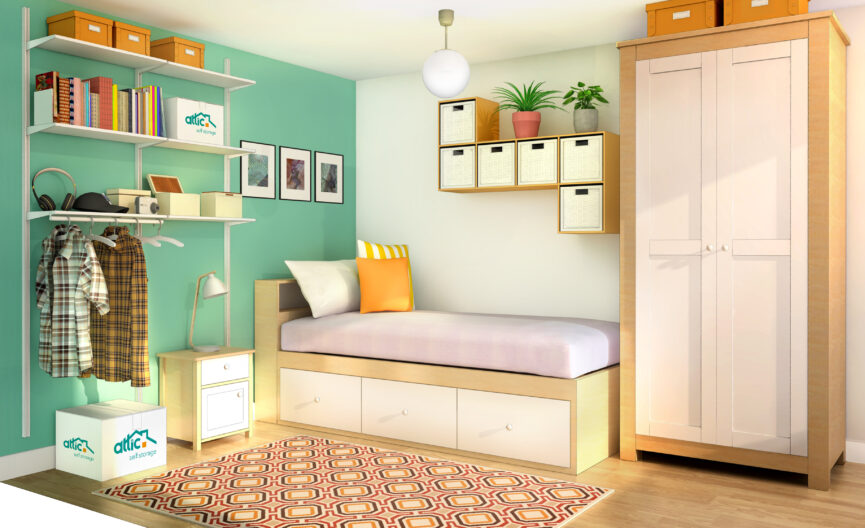Wondering how to make a small bedroom look bigger? Here’s a little secret – the trick to a spacious room is the decor. You can clear out your wardrobe and cut back on the clutter, but your bedroom won’t look any bigger until you rethink how it’s styled. Here are a few simple tips to help you get the most out of a small bedroom or living room—whether that means choosing space-saving furniture or adding a cosy finishing touch
- Furnish small rooms with mirrors and reflective furniture
Mirrors can instantly make a room feel bigger by bouncing light around and giving the impression of more space. The larger the mirror, the better—just keep the frame slim and simple so it doesn’t take over. If you can, place the mirror opposite a window or in a spot where it reflects part of the room. Reflective or glass furniture works in the same way—it helps open things up without adding weight to the space. If you’re asking how to make a box room look bigger, this is a great place to start. - Switch to natural LED bulbs to brighten up a room
Another affordable tip is by switching to Certain LED bulbs can mimic natural light. This is a helpful trick if your small living room isn’t getting much sunlight, especially if the only window is north-facing or blocked by a wall or a tree. Natural LEDs have the added bonus of reducing eye strain by mimicking the ideal outdoor light level, preventing potential sight problems in future. One solution for two problems! - Declutter and store items you don’t regularly use
Maximising floor and surface space is essential in small rooms. Regular decluttering can prevent accumulation of unused items that make rooms feel crowded. For belongings you want to keep but don’t need day-to-day, flexible short-term storage is a cost-effective way to free up space without downsizing your possessions permanently. - Choose colours and patterns that visually expand the room
Choosing the right colours can make a big difference when it comes to making a room look bigger. Light shades—such as white, beige, pale grey or soft pastels like light blue or green—help reflect natural light and create a brighter, more open feel. If you want to add interest without overwhelming the space, try using patterns thoughtfully. Horizontal stripes can make a room appear wider, while vertical ones draw the eye upward and make ceilings feel taller—all without adding visual clutter. - Maximise vertical space with elevated furniture
If you’re figuring out how to maximise space in a small bedroom, think upwards. Tall shelves, raised beds with storage underneath, or foldaway wall beds free up floor space while keeping your room functional. This is especially helpful in small bedrooms that double as workspaces or studios. - Choose fewer, larger pieces for a balanced layout
In small spaces, it’s often better to choose a few well-proportioned pieces rather than filling the room with lots of smaller items. Simple, bold designs with a low profile—like a low bed, modular sofa, or statement mirror—can help anchor the space without making it feel crowded. This approach works especially well when exploring design ideas for small bedrooms, where balance and clear floor space are key. The same applies to compact living rooms—avoid overfilling the area and focus on multi-functional pieces that offer storage or added purpose. In both cases, less really is more. - Use bunk beds to save space in kids’ rooms
For children’s rooms or shared bedrooms, bunk beds are a practical way to get more use out of the space. They make it easier to fit in a second bed, a play area or even a small desk. And if you’re tight on storage, some bunk beds even come with built-in drawers or shelving underneath.
If you’re redecorating, rearranging furniture or just trying to make the most of a small room, these ideas are a good place to start. And if you need somewhere to keep your furniture or belongings in London while you sort things out, Attic Self Storage offers flexible, affordable furniture storage—ideal if you’re moving house, renovating or simply making space.



